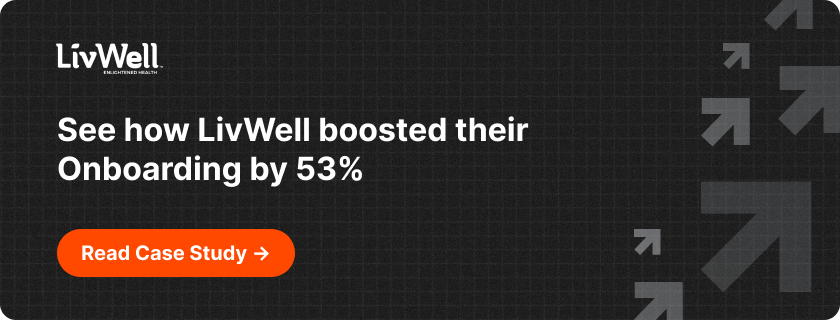Accelerate Your Retention Performance
Get a personalized roadmap from Propel’s experts!

In 2025, customer retention email marketing has become the quiet powerhouse behind B2C growth. While most brands chase new leads with flashy campaigns, the real profits come from repeat customers - the ones who already know and trust your brand.
At Propel, we do customer retention marketing for B2C, DTC, ecommerce, and subscription apps.
Think of it this way: your existing customers don’t need convincing. They just need reminding - of your value, your offers, and the reasons they chose you in the first place. That’s where retention-focused emails step in. From personalized win-back sequences to post-purchase journeys and reward reminders, these emails don’t just sell - they build relationships that keep revenue flowing.
In this guide, we’ll break down what customer retention email marketing is, why it matters in 2025, and how the right templates, metrics, and automation strategies can help B2C brands boost repeat purchases, reduce churn, and grow lifetime value - without sounding robotic or pushy.
Retention email marketing is the art of keeping your existing customers active, engaged, and buying again. Instead of sending one-off promotions, it uses a series of personalized, automated emails designed to build lasting relationships and encourage repeat purchases over time.
When done right, these emails go beyond transactions - they create a dialogue. They remind users why they loved your product, recognize their loyalty, and reward them for coming back. For B2C brands, this is often the difference between a one-time sale and a long-term customer.

Acquisition emails are about first impressions. They introduce your brand, highlight offers, and convince new users to buy.
Retention emails, on the other hand, start after the first purchase. Their goal is not to sell harder - it’s to nurture trust and help customers see continued value.
For example:
Each of these examples strengthens brand recall, builds emotional connection, and nudges users to stay active.
Email is still the most reliable direct line to your customers. Unlike social platforms, it’s owned communication - you decide when and how to reach users.
Here’s how email drives retention:
By combining automation with relevance, brands make users feel seen - and that feeling keeps them coming back.
An 80% retention rate means that 8 out of 10 customers continue engaging with your brand over a set period - whether that’s a quarter, a year, or a campaign cycle.
In the B2C world, that’s a sign of strong product satisfaction and emotional loyalty. It shows that your retention emails are doing their job - reminding customers of value, reducing churn, and maintaining consistent engagement.
But here’s the catch: maintaining that level requires constant optimization. Even small improvements in retention (say, from 80% to 85%) can translate into massive revenue growth because you’re spending less to re-acquire lost users.
Would you like me to continue with the next H2 (“How Can B2C Brands Use Retention Email Marketing Templates and Examples Effectively?”) in the same tone and structure?
Great customer retention emails don’t happen by chance - they follow proven frameworks that connect timing, tone, and psychology. Templates help you repeat success across campaigns while examples show how top brands turn simple messages into loyal customers.
The goal isn’t to copy but to understand what triggers action - the structure, subject line, emotion, and incentive that make customers click “Buy Again.”
Here are a few tried-and-tested retention email templates every B2C brand can adapt:
Absolutely - here are some examples from real B2C retention success stories:
Each of these examples works because it centers around the user, not the brand. They blend empathy, timing, and personalization to keep engagement natural and consistent.
Every example carries a formula that can be replicated. What makes them effective is the psychology behind them:
Email keeps your brand top of mind. It helps you stay connected with customers through personalized recommendations, milestone messages, and exclusive rewards. Every well-timed email reminds users why they chose you — and encourages them to stay longer.
The 80/20 rule means that around 80% of your revenue often comes from 20% of your loyal customers. Retention email marketing focuses on nurturing that 20% — your most valuable group — with relevant offers and personalized communication.
The three R’s are Reminder, Recognition, and Reward.
It means 8 out of 10 customers continue engaging with your brand after a set time frame. A high retention rate shows that your product and emails deliver real value — and that your customer base trusts your brand.
Start with your goal (reactivation, upsell, or loyalty).
Then structure your template like this:
Keep it short, human, and visually easy to scan.
Retention email marketing isn’t just about sending another campaign — it’s about building consistency, trust, and value across every customer interaction.
For B2C brands, the real growth doesn’t come from acquiring new customers; it comes from keeping the ones you already have. With the right email strategy, templates, and automation tools, you can turn one-time buyers into repeat purchasers — and repeat purchasers into loyal advocates.
In 2025 and beyond, the brands that win will be those that treat retention as a relationship, not a metric.
Every email is a chance to remind, recognize, and reward — and that’s what keeps your audience coming back.
Proven playbooks and strategies to turn retention into a growth driver!